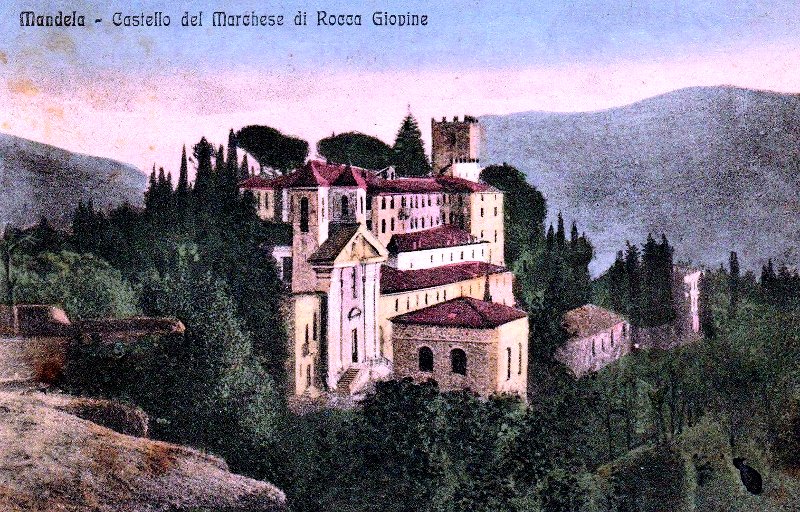The Castle of Mandela
The Gardens of Horace
Castello del Gallo di Roccagiovine


Landmark of the Grand Tour, the Castle of Mandela (correctly, Castello dei del Gallo di Roccagiovine) is a fortress of Ancient Roman and Medieval origins.

The area was first inhabited (perhaps 5th century BC) by Aequi, an ancient nation from the Apennine Mountains in Central Italy, from which the Romans borrowed the rites of declaring war.
When Romans gained the power on it (304 BC), it notably was Horace, the poet, who let these surroundings to be known, after his walks along the Licenza creek.
Later, the area became of strategic importance because of its critical position above the military and commercial traffic between Rome and Subiaco, the village where Nero had his famous villa and where, centuries after, several abbeys were founded (notably St. Benedict's and St. Scolastica's ones, 7th century). The manor was also the residence of the Abbot of Subiaco, for a while.
During the Middle Ages, the powerful Orsini family, who owned most of the castles in the Aniene River Valley, built a fortress with a tower to control the Tiburtina below. The tower is still there and the dining room was their armoury.
The portuguese Nuñez Sanchez family bought the castle in the 17th century, and turned it into a stately home.
The Castle was then transformed into a romantic stately home by Napoleon’s grand niece and cousin of Napoleon III, Julie Bonaparte, wife of Alessandro del Gallo di Roccagiovine, Marquess of Mandela, who were patrons of intellectual freedom and of the arts, hosting here an international literary salon.
It is surrounded by the beautiful parkland known to be the countryside and farm of the Roman poet Horace’s summer Villa. This was immortalised as the ideal landscape in the 18th century by Jakob Phillip Hackert (1737-1808), considered to be one of the masters of landscape painting of his time, and the artistic heir of Claude Lorrain and Nicholas Poussin one hundred years later.
The Del Gallo family is now opening the gardens to the public in order to share and preserve this heritage for the future generations.